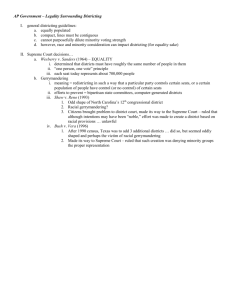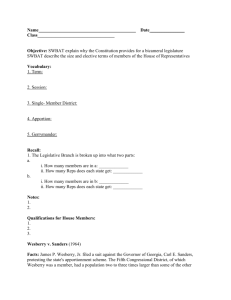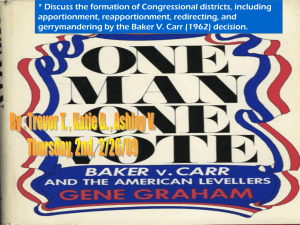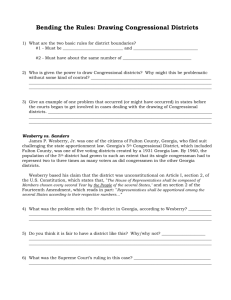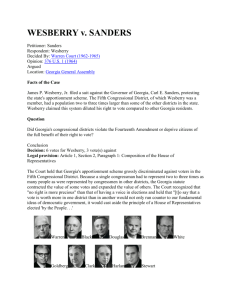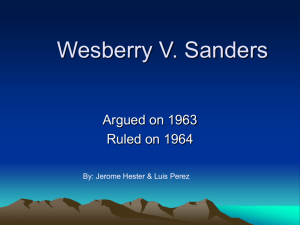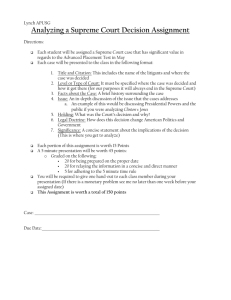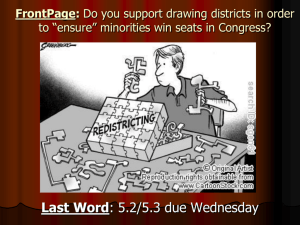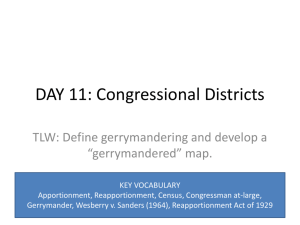Chapter 10 Electoral College and Supreme Court Case Review
advertisement
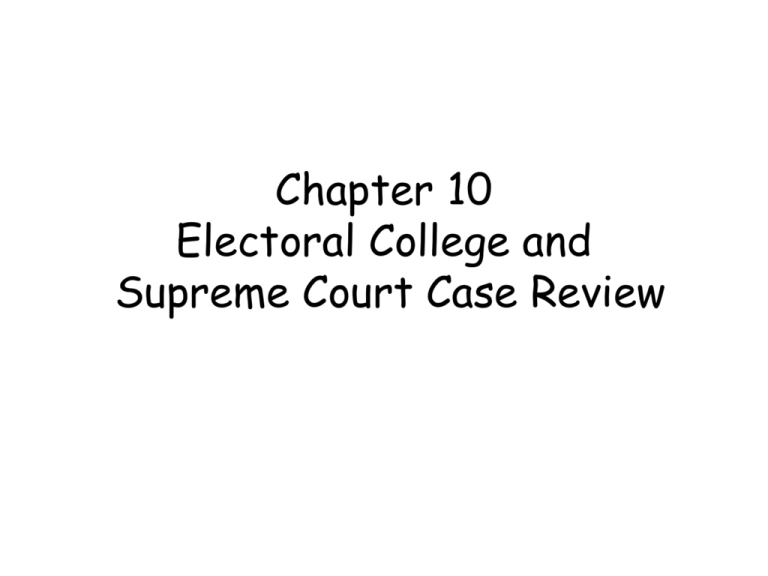
Chapter 10 Electoral College and Supreme Court Case Review The Electoral College • 1. Why was the Electoral College system established? • 2. What is the role of the electoral votes in the campaign • 3. How few states can a candidate win and win the election? • 4. What are the flaws of the system? Important Supreme Court Cases • Baker vs. Carr (1962) – Charles Baker and other Tennessee citizens alleged that a 1901 apportionment law for the state General Assembly was ignored. – He argued their reapportionment ignored economic population growth and shifts in the state. – Conclusion: The Supreme Court can rule over apportionment issues in the state. Important Supreme Court Cases • Reynolds vs. Sims (1964) – Voters from Jefferson County, Alabama, challenged the apportionment of the state legislature. – Alabama Constitution stated that each county was entitled to at least one representative and there were to be as many districts as senators. Some district populations varied as much as 41-1 – Conclusion: States must construct districts of equal population to the greatest extent possible Important Supreme Court Cases • Wesberry vs. Sanders (1964) – Suit filed against Governor Sanders of Georgia protesting the states apportionment scheme. – The 5th district where Mr. Wesberry lived had a population 2 to 3 times larger than other districts. – He claimed this diluted his right to vote in comparison to other Georgia residents. – Conclusion: No vote should be worth more than another. “One person equals one vote.” Important Supreme Court Cases • Majority vs. Minority Districts – created to make it easier for minority citizens to elect minority representatives. Important Supreme Court Cases Shaw vs. Reno (1993) – US Attorney General rejected a North Carolina congressional reapportionment plan because it created only one black-majority district. – A second was created but its size and shape were questionable – Argument made that this was done to gain additional black representatives. – Conclusion: Racial gerrymandering can only occur with a “compelling” governmental interest. Important Supreme Court Cases Miller vs. Johnson (1995): - Between 1980 and 1990 only one of Georgia’s 10 congressional districts was majority black - Georgia’s black population of 27% entitled them to an 11th congressional seat leading to a redraw of the state’s congressional districts. - An 11th district was finally agreed upon but it was called a “geographic monstrosity” - Conclusion: Racial gerrymandering violates the equal protection clause
